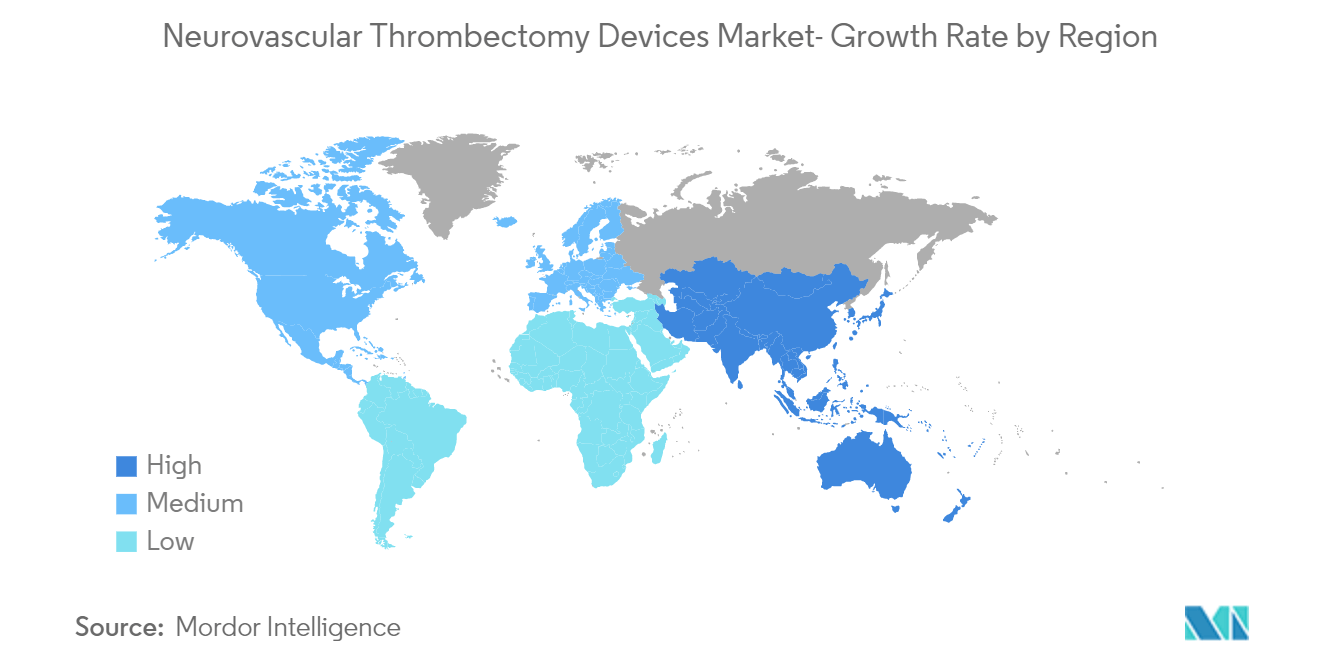Market Trends of Global Neurovascular Thrombectomy Devices Industry
This section covers the major market trends shaping the Neurovascular Thrombectomy Devices Market according to our research experts:
Stent Retrievers Segment is Expected to Account for the Largest Market Share During the Forecast Period
Stent retrievers are expected to hold a significant share in the growth of the market during the forecast period. Stent retrievers were approved by the United States Food and Drug Administration in 2012, and are tiny mesh tubes that grab and extract blood clots in blocked arteries. These devices are used in conjunction with a highly flexible, thin suction catheter threaded into the femoral artery in the groin area and up into the arteries in the brain.
The factors such as rising research and development studies and product approvals will drive the segmental growth. As per the study "Thrombectomy for Acute Ischemic Stroke with a New Device-Skyflow: Study Protocol for a Prospective, Multicenter, Stratified Randomized, Single-Blinded, Parallel, Positive Controlled, Non-inferiority Clinical Trial," published in April 2021, Skyflow stent retriever has some unique structural features such as the double helix structure which makes stent flexible and adhesive, thereby improving the thrombus removal rate, and less damage for intracranial blood vessels. This factor is expected to drive the growth of the segment.
Launching technologically advanced products increases the efficacy of the thrombectomy procedures, thereby increasing the demand for stent retrievers, thus contributing to the market's growth. For instance, in May 2021, the first patients in the United States were treated with the Tigertriever revascularization device manufactured by Rapid Medical. The Tigertriver is an adjustable stent retriever that enables neuro-interventionalists to remove blood clots and restore blood flow to the brain following an ischemic event.
Thus, due to the abovementioned factors, the studied segment is expected to contribute to the significant growth of the market.

North America is Expected to Hold a Significant Share in the Market and Expected to do Same in the Forecast Period
North America is expected to hold a significant share in the market during the forecast period. The primary driving factors for the North American neurovascular thrombectomy devices market are the increasing prevalence of acute ischemic strokes, increasing research and development activities, increasing product launches, and rising strategic initiatives by key market players.
The United States within the North American region is expected to hold a significant share in the studied market during the study period owing to a high prevalence of stroke. For instance, according to the article published by the Center for Disease Control and Prevention (CDC) in April 2022, more than 795,000 people in the United States have a stroke yearly. Approximately 87% of all the reported strokes are ischemic strokes. Thus, the high burden of ischemic stroke will likely increase the demand for neurovascular thrombectomy procedures, thereby driving the studied market. Moreover, strategic initiatives taken by the key market players such as product launches, partnerships, new programs, mergers, and acquisitions are anticipated to drive market growth. For instance, in April 2021, Rapid Medical received the United States Food and Drug Administration (FDA) clearance for its Tigertriever revascularisation device.
Rising investments will also boost innovation in the studied market, thereby driving the market. For instance, in June 2021, Vesalio secured a Class A financing round which will be utilized to support its ongoing United States Investigational Device Exemption (IDE) stroke study and expand its innovative product portfolio, including the proprietary NeVa platform, which was designed to achieve first-pass recanalization in acute ischaemic stroke by effectively removing all types of neurovascular clots from a patient's anatomy.
Therefore, the studied market is expected to lead to lucrative growth in North America due to the abovementioned factors.


